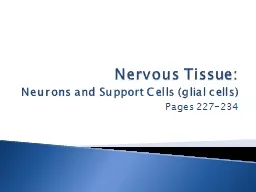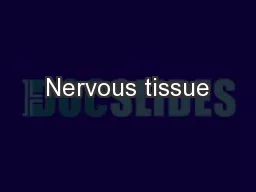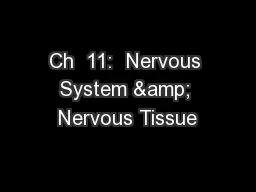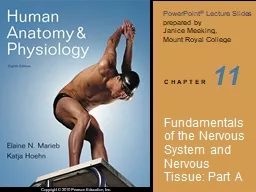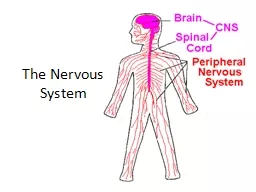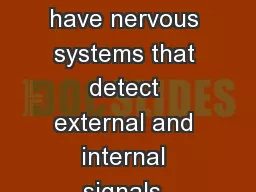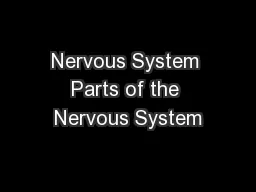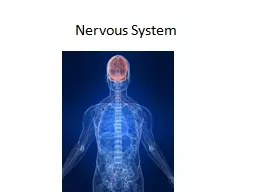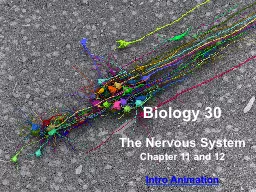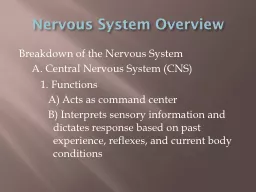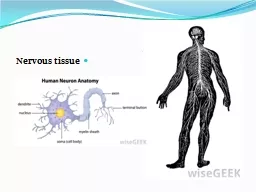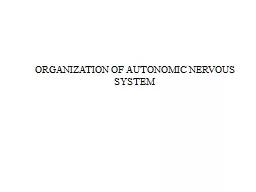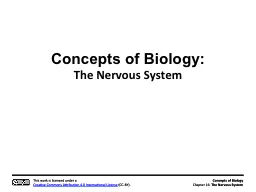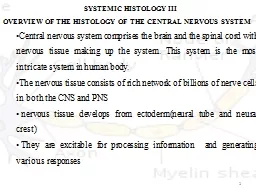PPT-Nervous Tissue: Neurons and Support Cells (
Author : ellena-manuel | Published Date : 2018-10-21
glial cells Pages 227234 Astro cytes Braceanchor neurons provide chemical barrier Most abundant glial cells Microglia Destroy threatening particlescells phagocytes
Presentation Embed Code
Download Presentation
Download Presentation The PPT/PDF document "Nervous Tissue: Neurons and Support Cell..." is the property of its rightful owner. Permission is granted to download and print the materials on this website for personal, non-commercial use only, and to display it on your personal computer provided you do not modify the materials and that you retain all copyright notices contained in the materials. By downloading content from our website, you accept the terms of this agreement.
Nervous Tissue: Neurons and Support Cells (: Transcript
Download Rules Of Document
"Nervous Tissue: Neurons and Support Cells ("The content belongs to its owner. You may download and print it for personal use, without modification, and keep all copyright notices. By downloading, you agree to these terms.
Related Documents

